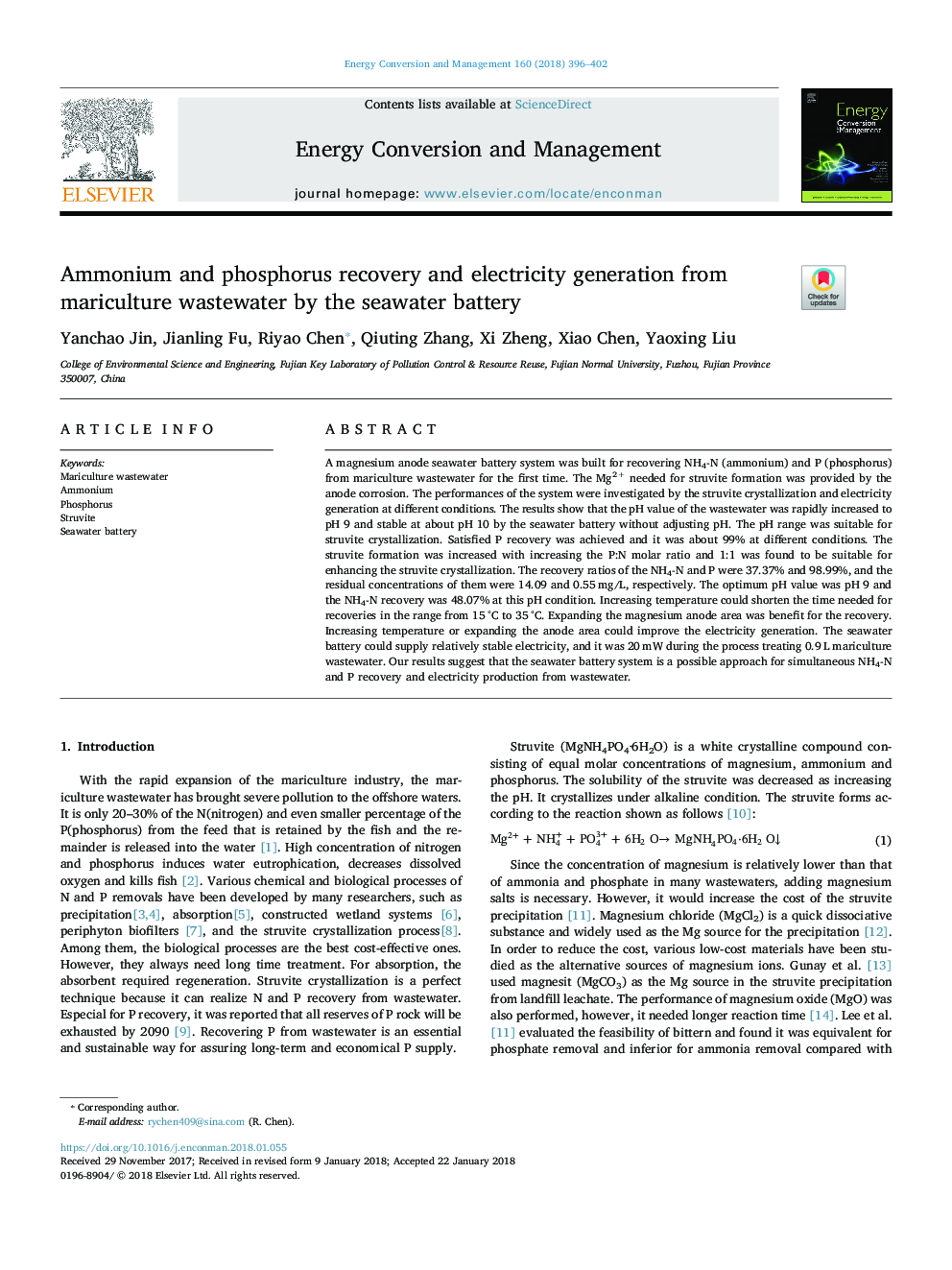| Article ID | Journal | Published Year | Pages | File Type |
|---|---|---|---|---|
| 7159017 | Energy Conversion and Management | 2018 | 7 Pages |
Abstract
A magnesium anode seawater battery system was built for recovering NH4-N (ammonium) and P (phosphorus) from mariculture wastewater for the first time. The Mg2+ needed for struvite formation was provided by the anode corrosion. The performances of the system were investigated by the struvite crystallization and electricity generation at different conditions. The results show that the pH value of the wastewater was rapidly increased to pH 9 and stable at about pH 10 by the seawater battery without adjusting pH. The pH range was suitable for struvite crystallization. Satisfied P recovery was achieved and it was about 99% at different conditions. The struvite formation was increased with increasing the P:N molar ratio and 1:1 was found to be suitable for enhancing the struvite crystallization. The recovery ratios of the NH4-N and P were 37.37% and 98.99%, and the residual concentrations of them were 14.09 and 0.55â¯mg/L, respectively. The optimum pH value was pH 9 and the NH4-N recovery was 48.07% at this pH condition. Increasing temperature could shorten the time needed for recoveries in the range from 15â¯Â°C to 35â¯Â°C. Expanding the magnesium anode area was benefit for the recovery. Increasing temperature or expanding the anode area could improve the electricity generation. The seawater battery could supply relatively stable electricity, and it was 20â¯mW during the process treating 0.9â¯L mariculture wastewater. Our results suggest that the seawater battery system is a possible approach for simultaneous NH4-N and P recovery and electricity production from wastewater.
Related Topics
Physical Sciences and Engineering
Energy
Energy (General)
Authors
Yanchao Jin, Jianling Fu, Riyao Chen, Qiuting Zhang, Xi Zheng, Xiao Chen, Yaoxing Liu,
